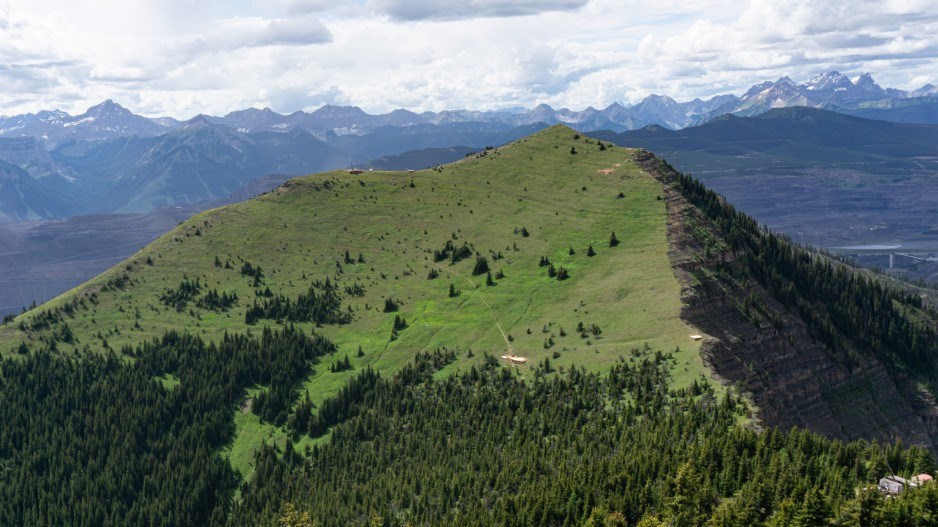If the B.C. government is so confident that a new open pit metallurgical coal mine that Teck Resources (TSX:TECK.B) wants to build in the East Kootenays won’t increase pollution in the Elk Valley, it should not object to an environmental review involving the federal Impact Assessment Agency.
So says an environmental group, Wildsight, which focuses on environmental issues in the Columbia and Rocky Mountain region. It is one of 33 groups that are calling for a federal review.
Wildsight and a number of First Nations on either side of the Canadian-American border are stepping up the pressure on federal Environment Minister Jonathan Wilkinson to designate Teck’s proposed Castle project north of Elkford B.C. a reviewable project.
Wilkinson may also feel pressure from the U.S. to add a federal layer to the environmental review process, as the Environmental Protection Agency (EPA) has also raised concerns about elevated levels of selenium and nitrates across the border in the Kootenai River and Lake Koocanusa.
Wilkinson no doubt has a good grasp of the environmental issues related to coal mines in the Elk Valley. Before entering politics, Wilkinson was the CEO of BioteQ Environmental Technologies Inc., (TSX:BQE) – now called BQE -- which was contracted by Teck to build a water treatment system to remove selenium from mine effluent.
Selenium is a naturally occurring element that is essential to human health, but at high concentrations it can be toxic to fish, birds and amphibians.
Teck operates four metallurgical coal mines in the Elk Valley. The Castle project would be an extension of Teck’s existing Fording River coal mine. The Castle project would use existing infrastructure at the Fording River operations, and would extend the mine life by several decades, the company says.
“There are three other mines in the Elk Valley right now that have both federal and provincial assessments,” said Lars Sander-Green, Wildsight’s mining coordinator. “But this one, because they’re calling it an expansion, that’s how they’re trying to get away from having a federal assessment.”
Projects falling exclusively within the borders of a province typically are subject to a single environmental review conducted by a provincial environment ministry. Some projects can become subject to a federal review as well, however, especially when there are heightened concerns about environmental impacts.
And there’s little doubt that coal mining in general in the Elk Valley region has had a negative impact on water quality and fish habitat over a period of decades.
Cutthroat trout have nearly vanished from the upper Fording River, and coal mines that have operated in the region for decades have been blamed for the crash.
High selenium levels in the Fording and Elk rivers have been a problem for decades. Wildsight and other groups fear that adding another open pit mine to the region will exacerbate the problem.
Given the potential environmental impacts of the Castle project, Wildsight and First Nations say the project should be subject to the additional scrutiny of a federal environmental review.
“The Castle mine would see an entire mountain in the BC Rockies removed in order to ship 350 million tonnes of coal overseas until 2060,” Wildsight says in a press release.
“The Castle mine would add more water pollution to the upper Fording River, where 93% of adult trout disappeared in just two years and send more pollution downstream to the U.S., where fish with high selenium levels have been found hundreds of kilometres downstream.”
The EPA has also raised concerns about selenium and nitrate levels in rivers and lakes downstream of the Elk River, in Montana and Idaho.
“Selenium and nitrate concentrations entering the lake from British Columbia’s Elk River have been increasing since data collection began several decades ago,” the EPA states in a press release.
The EPA said recent sampling showed that selenium levels in flowing waters “did not exceed EPA recommended criteria,” but noted that nitrate in water below Libby Dam was nearly three times higher than samples collected between 2000 and 2004.
In a letter to a federal colleague, Kevin Jardine, B.C.’s deputy minister of environment, says a federal review is not needed.
“It is our view the project is being appropriately managed by the province through our comprehensive environmental assessment and permitting processes,” he writes.
Jardine notes in his letter that the ministry has issued more than $600,000 in fines and penalties to Teck for “various environmental violations.”
“The penalties are an indication of the increased number of inspections completed and the strengthened compliance measures we have implemented at the mining operations,” Jardine writes.
In 2013, the ministry required Teck to develop an area-based management plan for the whole region where it operates its coal mines.
“If BC is so confident that they have the many century long water pollution problem under control, why are they opposed to the feds assessing the mine?” Sander-Green asks.
Federal and provincial environmental reviews can be conducted as a single assessment that meets the requirements of both federal and provincial jurisdictions. But provincial and federal environment ministers don’t always come to the same conclusions as a result of these reviews.
The New Prosperity mine, for example, was subject to an environmental review that resulted in the provincial environment ministry issuing a certificate, but with the federal ministry rejecting the project.
Teck says it has made progress on addressing the selenium problem. It currently has treatment plants at its Line Creek and Elkview operations that the company says has reduced selenium concentrations downstream of the mine, and is building a third treatment plant at its Fording River mine.
"In 2021, we expect to have capacity to treat up to 47.5 million litres per day with expected significant reductions of selenium and nitrate in the watershed as a result" the company said in a statement.
By 2025, the company plans to treat 90 million litres per day.
Wilkinson has until August 19 to decide whether or not the project should be designated a reviewable project by his ministry.




